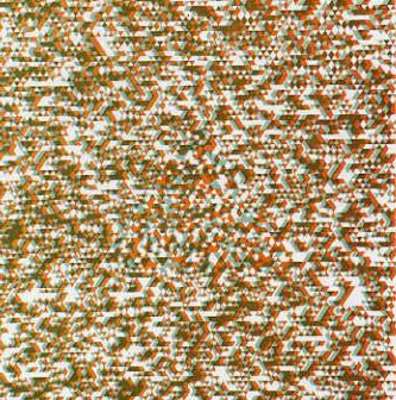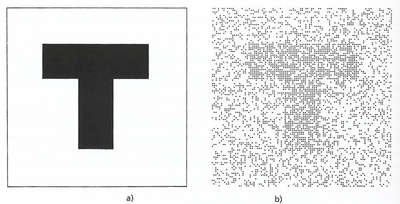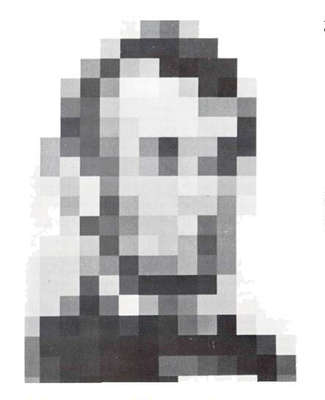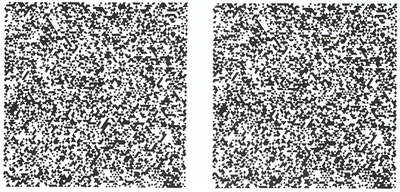Béla Julesz was a visual neuroscientist and experimental psychologist in the fields of visual and auditory perception. Besides many other technical and scientific contributions during his time at Bell Laboratories, Murray Hill, NJ, he was the originator of the computer generated Random-Dot Stereograms, an imaging technique, and of the method of studying texture discrimination by constraining second-order statistics. After having fled from Hungary in 1956, he emigrated to the USA where he worked for Bell Labs as a member of the famous group under Manfred R. Schroeder that became a hotbed for art and technology. During this time, he and A. Michael Noll put up the first show of “Computer-generated pictures” at the Howard Wise Gallery in New York (April 1965).
Béla Julesz
| i |
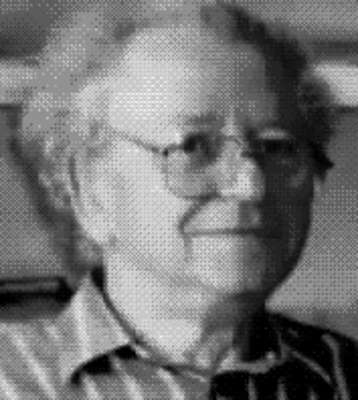



| last name: | Julesz |
| first name: | Béla |
| birthday: | 1928 |
| birth-place: | Budapest (Hungary) |
| death date: | December 31, 2003 |
Summary
Biography
| 1950 | Diploma in Electrical Engineering at the Technical University, Budapest, Hungary. |
| 1956 | Ph.D. (research in network theory, microwave systems and television signals) from the Hungarian Academy of Sciences, Budapest, Hungary. – Emigrated to USA. |
| 1956 | Joined the AT&T, Bell Laboratories, in Murray Hills, NJ, USA, where his research focused on physiological psychology topics including depth perception and pattern recognition within the visual system. |
| 1960 | Designed the “random-dot stereograms” – paired images that are individually meaningless, yet form a coherent 3-D picture when viewed simultaneously, one by each eye. |
| 1964-82 | Head of the Sensory and Perceptual Processes Department, Bell Laboratories. |
| 1965 | Participated in the the art exhibition “Computer-Generated Pictures” with A. Michael Noll at the Howard Wise Gallery, New York, displaying computer-generated stereograms and textures. |
| 1971 | Published the book ’ Foundations of Cyclopean Perception’. |
| 1983 | Awarded the MacArthur Fellowship (“genius award”) for his work in Experimental Psychology and Artificial Intelligence. |
| 1983-1989 | Head of the Visual Perception Research Department, Bell Laboratories. |
| 1985 | Awarded the Dr. H. P. Heineken Prize by the Royal Netherlands Academy of Arts and Sciences. |
| 1987 | Elected to the National Academy of Sciences, USA. |
| 1989 | Received the Karl Spencer Lashley Award by the American Philosophical Society. |
| 1989 | Retired from Bell Labs and established the Laboratory of Vision Research at the Department of Psychology, Rutgers University, The State University of New Jersey. |
| 1982-1991 | Neurosciences Associate of the Neurosciences Institute. |
| 1994 | Published the book, ‘Dialogues on Perception’. |
Member of institutions
Works
Exhibitions
References
- Bense, Max 1965. Computergrafik bei Wendelin Niedlich.
- Dietrich, Frank 1986. Visual Intelligence: The First Decade of Computer Art (1965-1975). [unknown address]:Leonardo
- Franke, Herbert W. 1971. Computergraphik Computerkunst. Munich:Bruckmann
- Klütsch, Christoph 2005. The Summer 1968 in London and Zagreb: Starting or End Point for Computer Art?. In: Creativity & Cognition 05 Proceedings. [unknown address]:ACM press
- Noll, A. Michael 1994. The Beginnings of Computer Art in the United States: A Memoir. In: Leonardo. Cambridge, MA:The MIT Press
Publications
- Julesz, Béla, ed. 1971. Foundations of Cyclopean Perception. [unknown address]:University of Chicago Press
- Julesz, Béla, ed. 1995. Dialogues on perception. Cambridge Mass.:MIT Press
- Weibel, Peter & Julesz, Béla, eds. 2005. Beyond art : a third culture : a comparative study in cultures, art, and science in 20th century Austria and Hungary. [New York NY]:SpringerWienNewYork
Illustrations
Comments
enter new comment



